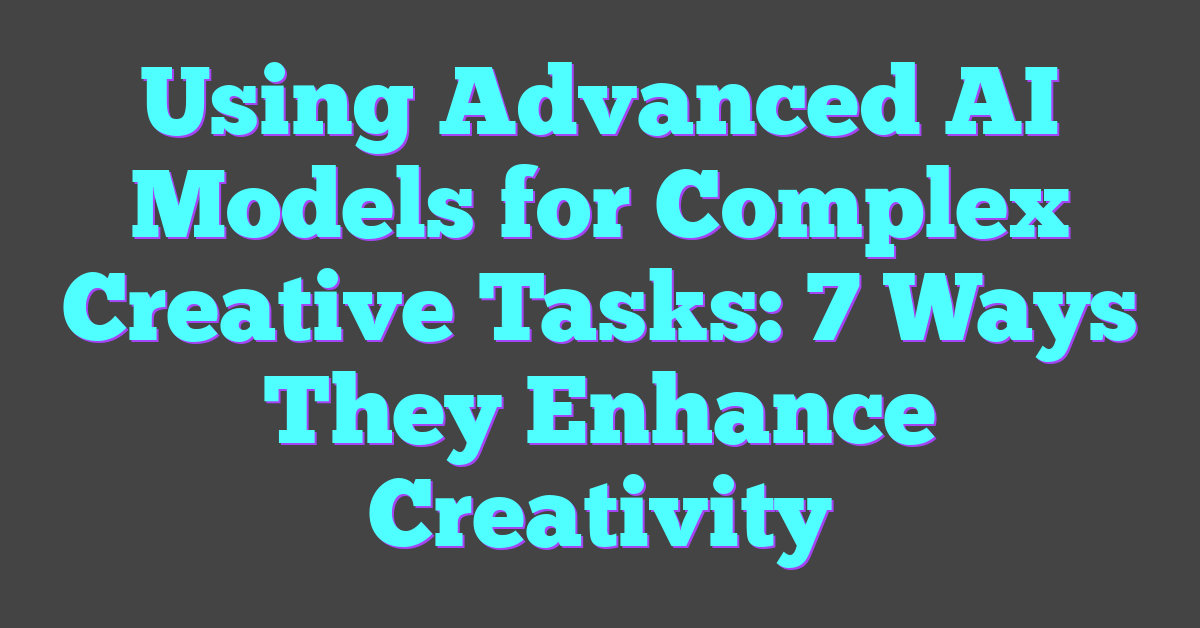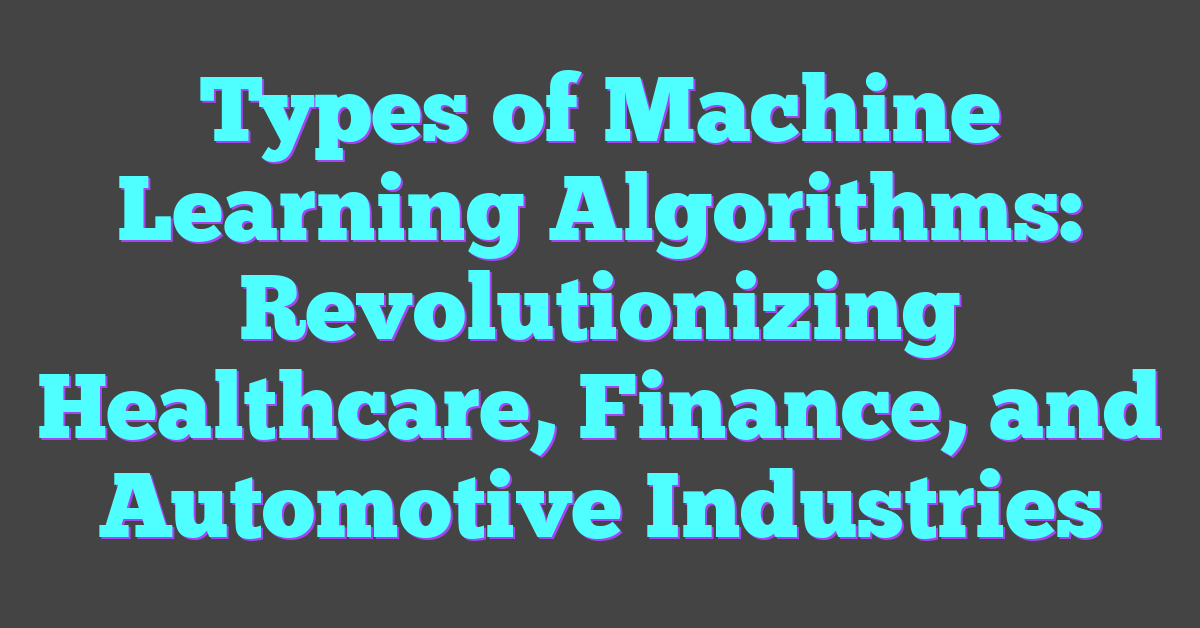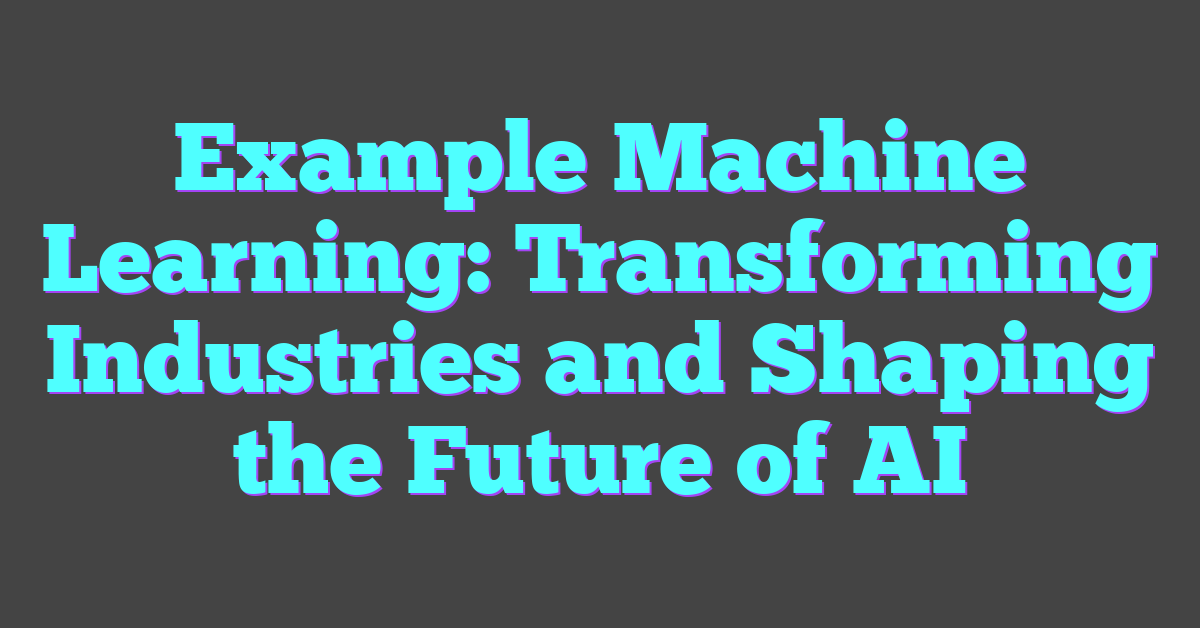Key Takeaways
- Revolutionizing Creativity: Advanced AI models like Transformers and GANs are transforming creative processes by enhancing efficiency and fostering innovation.
- Diverse Applications: AI excels in various creative tasks including content generation, design assistance, music composition, and video editing, enabling creators to push creative boundaries.
- Significant Benefits: Integrating AI into creative industries boosts productivity, enhances creativity, reduces costs, and provides access to sophisticated tools previously limited to larger organizations.
- Addressing Challenges: Successful AI implementation requires high-quality data, ethical considerations, adequate computational resources, and the necessary skills to integrate AI tools into existing workflows.
- Future Prospects: The future of AI in creative work promises greater personalization, seamless human-AI collaboration, and continued advancements in AI capabilities, driving the next wave of innovation in creative industries.
In today’s rapidly evolving digital landscape, advanced AI models are revolutionizing the way creative tasks are approached. From generating intricate designs to composing compelling narratives, these sophisticated systems empower creators to push the boundaries of their imagination.
By leveraging machine learning and deep neural networks, AI tools can handle complex projects that once required extensive human effort. This collaboration between humans and machines not only enhances productivity but also unlocks new avenues for innovation, making the creative process more dynamic and efficient.
As industries across the board embrace these cutting-edge technologies, understanding how to effectively utilize advanced AI models becomes essential. This article explores the various applications and benefits of AI in tackling complex creative challenges, offering insights into how these tools are shaping the future of creativity.

Overview of Advanced AI Models
Advanced AI models form the foundation for tackling complex creative tasks, enhancing efficiency and fostering innovation. These models integrate machine learning and deep neural networks to revolutionize creative processes across multiple industries.
Types of Advanced AI Models
- Transformers: Enable sophisticated natural language processing and generation using attention mechanisms.
- Generative Adversarial Networks (GANs): Create realistic images, videos, and other media by training two neural networks in opposition.
- Reinforcement Learning Models: Improve creative decision-making by learning optimal actions through trial and error.
- Autoencoders: Compress and reconstruct data, facilitating advanced data manipulation and feature extraction.
Capabilities in Creative Tasks
- Content Generation: Produce articles, scripts, and marketing materials with high coherence and relevance.
- Design Assistance: Generate graphic designs, architectural plans, and product prototypes efficiently.
- Music Composition: Create original music tracks and assist composers in developing new melodies and harmonies.
- Video Editing: Automate editing processes, including scene selection, transitions, and special effects integration.
Applications in Creative Industries
Advanced AI models transform various creative sectors by providing innovative tools and enhancing productivity. These applications streamline workflows and enable creators to explore new possibilities.
Art and Design
AI-driven tools generate unique artworks, assist designers in concept development, and automate repetitive tasks. Generative Adversarial Networks (GANs) create realistic images, allowing artists to experiment with diverse styles. Design software integrated with AI offers smart layout suggestions and color palette generation, boosting both efficiency and creativity.
Music Composition
AI models compose original music, supporting artists in creating diverse soundscapes. Machine learning algorithms analyze existing compositions to generate new melodies and harmonies. Tools like OpenAI’s MuseNet facilitate arrangement and production, enabling musicians to experiment with different genres and styles effortlessly.
Content Creation
AI assists in generating written content, scripts, and multimedia materials, streamlining the content creation process. Natural language processing models produce articles, blog posts, and marketing copy with high coherence and relevance. Video editing tools powered by AI automate tasks such as scene detection and color correction, allowing creators to focus on storytelling and creative expression.
Benefits of Using AI in Creative Processes
AI enhances creative processes by streamlining workflows and expanding creative possibilities. It enables creators to produce higher quality work with greater efficiency.
Increased Efficiency
AI automates repetitive tasks, allowing creators to focus on higher-level creative decisions. For example, AI-powered design tools can handle resizing images or adjusting layouts, saving hours of manual work.
Enhanced Creativity
AI provides innovative ideas and patterns that might not emerge through traditional brainstorming. Generative models create unique designs, music compositions, and written content, inspiring creators to explore new directions.
Cost Savings
Implementing AI reduces labor costs associated with manual tasks. Automated video editing or content generation tools lower the need for extensive human resources, making high-quality production more affordable.
Access to Advanced Tools
AI offers access to sophisticated creative tools that were previously available only to large organizations. Independent artists and small businesses can leverage AI-driven software for professional-grade results without significant investment.
Data-Driven Insights
AI analyzes large datasets to identify trends and preferences, informing creative decisions. Marketers use AI to tailor content to audience interests, increasing engagement and effectiveness.
Scalability
AI systems scale creative operations seamlessly, handling increased workloads without compromising quality. Content creators can produce more material in less time, meeting higher demand and expanding their reach.
Personalization
AI customizes content to individual preferences, enhancing user experience. Personalized recommendations in media platforms ensure that audiences receive content that resonates with their tastes.
Improved Collaboration
AI facilitates better collaboration among creative teams by providing shared insights and resources. Tools like AI-driven project management software streamline communication and coordination.
Continuous Learning
AI systems learn from each project, continuously improving their performance and offering better support over time. This adaptive capability ensures that creative tools evolve alongside user needs.
Competitive Advantage
Integrating AI into creative processes gives individuals and organizations a competitive edge. Leveraging advanced technologies differentiates creators in crowded markets, attracting more opportunities.
Example Benefits Table
| Benefit | Description | Example Use Case |
|---|---|---|
| Increased Efficiency | Automates repetitive tasks | AI-powered image resizing |
| Enhanced Creativity | Generates innovative ideas and patterns | Generative design models |
| Cost Savings | Reduces labor costs | Automated video editing tools |
| Access to Advanced Tools | Provides sophisticated tools to smaller entities | AI-driven design software |
| Data-Driven Insights | Informs decisions with trend analysis | Personalized marketing campaigns |
| Scalability | Handles increased workloads without quality loss | Mass content production for media firms |
| Personalization | Customizes content for individual preferences | Tailored content recommendations |
| Improved Collaboration | Streamlines team communication and resource sharing | AI project management platforms |
| Continuous Learning | Enhances tool performance through ongoing adaptation | Adaptive AI writing assistants |
| Competitive Advantage | Differentiates creators in the market | Unique AI-generated artistic styles |
Challenges and Considerations
Implementing advanced AI models in creative tasks presents several challenges. Data Quality and Availability affect model performance; insufficient or biased data can lead to inaccurate outputs. Computational Resources are necessary for training complex models, potentially increasing costs for creators. Ethical Concerns arise around content ownership and the potential misuse of AI-generated material. Skill Requirements demand creators understand AI tools to utilize them effectively, which may require additional training. Integration with Existing Workflows can be complex, necessitating seamless compatibility between AI systems and current creative processes. Creative Authenticity is another consideration; ensuring that AI contributions enhance rather than diminish the originality of creative works is essential. Addressing these challenges ensures that AI models effectively support complex creative endeavors.
Data Quality and Availability
High-quality, diverse datasets are crucial for training effective AI models. Limited or biased data can compromise the integrity of creative outputs.
Computational Resources
Advanced AI models require significant processing power and memory. Access to robust hardware or cloud-based solutions is necessary, potentially increasing operational costs.
Ethical Concerns
Issues such as intellectual property rights and the potential for generating misleading or harmful content must be carefully managed to maintain ethical standards in creative work.
Skill Requirements
Creators must possess a foundational understanding of AI and machine learning to leverage these tools effectively. This may involve investing time in learning new technologies and methodologies.
Integration with Existing Workflows
Seamlessly incorporating AI tools into established creative processes can be challenging. Ensuring compatibility and minimizing disruptions are key for smooth adoption.
Creative Authenticity
Maintaining the unique voice and originality of creative works is essential. AI should complement human creativity, not overshadow or replace it.
Cost Implications
The financial investment required for AI tools and resources can be a barrier for independent artists and small businesses, limiting accessibility and scalability.
Security and Privacy
Protecting sensitive data and ensuring the security of AI systems are critical to prevent unauthorized access and data breaches, safeguarding both creators and their audiences.
Continuous Learning and Adaptation
AI models require regular updates and maintenance to stay relevant and effective. Creators must be prepared to engage in ongoing learning to keep up with technological advancements.
Regulatory Compliance
Adhering to laws and regulations related to AI usage, data protection, and content creation is essential to avoid legal complications and ensure responsible use of technology.
Future of AI in Creative Work
AI advancements drive greater personalization in creative outputs, enabling tailored content that meets individual preferences. As machine learning algorithms improve, creators leverage AI to generate highly customized designs, music, and narratives. Integration with augmented reality (AR) and virtual reality (VR) technologies enhances immersive experiences, allowing for more interactive and engaging creative projects.
Collaborative AI tools become standard in creative workflows, facilitating seamless interaction between human creators and AI systems. These tools provide real-time suggestions, streamline iterative processes, and expand creative possibilities by offering diverse perspectives. Additionally, AI-powered analytics offer deeper insights into audience engagement, guiding creators to refine their work based on data-driven feedback.
The development of more sophisticated generative models enables the creation of complex and high-quality content with minimal human intervention. These models support a wider range of creative disciplines, including film production, game design, and literary writing. Moreover, advancements in natural language processing improve AI’s ability to understand and replicate nuanced human communication, enhancing the authenticity of AI-generated content.
Ethical AI practices shape the future of creativity, ensuring responsible use of AI technologies. Establishing guidelines for content ownership, transparency in AI-generated works, and addressing biases in AI models remain crucial. By prioritizing ethical considerations, the creative industry harnesses AI’s potential while maintaining integrity and fostering trust among creators and audiences.
As AI continues to evolve, ongoing education and training empower creators to effectively utilize AI tools. Accessible learning resources and collaborative platforms support skill development, enabling more individuals to participate in AI-driven creative endeavors. This democratization of AI technology fosters innovation and diversity in creative industries, driving the next wave of artistic and technological advancements.
Conclusion
Advanced AI models are reshaping the landscape of creative work by unlocking new possibilities and enhancing the way creators approach complex tasks. As these technologies become more accessible, they empower artists and innovators to push boundaries and explore ideas that were previously out of reach.
Balancing the benefits with the challenges ensures that AI serves as a valuable partner in the creative journey. Embracing these tools with thoughtful consideration paves the way for a future where creativity and technology seamlessly intertwine, driving continuous growth and inspiration across all creative industries.




